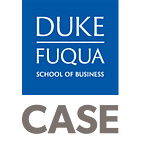Living Goods: Pearls of Scaling Wisdom
As part of this Scaling Snapshot, see also Living Goods’ Organizational Overview, Getting Ready for Scale, and Scaling Strategies. You can find the full scaling snapshot PDF here.
1. Protect Your Impact Drivers But Be Flexible on the Rest.
As you scale with other partners and in different contexts, you will need to be flexible on many aspects of your approach. Therefore, it is critical that you, as an organization, understand the key elements that drive your impact — and that you protect those elements as you scale. Once you’ve established these non-negotiables, be open to adapt and learn from the experience of other partners on all other pieces. For Living Goods, our non-negotiables are ensuring that CHWs are digitally-enabled, are paid (ideally, linked to their performance), and have access to medicines. But, when it comes to decisions around selling products to supplement their incomes, we are more flexible.
2. Stay True to Your Impact Focus as You Bring on Partners, As They May Bring Conflicting Priorities.
Partnerships — especially our partnerships with governments — have been critical to our ability to scale. You should bring your partners on your journey: understand their needs and priorities, find champions among them, ask their advice, and learn from their expertise. But, keep in mind that each partner is juggling multiple demands and priorities — some of which could dilute your key drivers of impact — so be prudent about which pieces of advice you take. As an example, Living Goods has been asked by partners to add on more health services, such as managing non-communicable diseases. Yet we believed that adding on too many services, especially early in our evolution, could dilute what we believed was our greatest need: our focus on child mortality reduction and family planning. We also understood that we needed to effectively refine and scale our basic model first, before adding too many additional elements.
3. Don’t Become Over Reliant on Just One or Two People Within Your Organization.
It can be easy to rely heavily on just a handful of people in your organization who can drive the depth and breadth of your work. However, especially as you scale, you need to build a more robust talent structure and processes, including succession planning and talent development programs. Build on the expertise you already have and ensure that any new recruits buy into your values and will help you get ahead of where you are going.
4. Be Willing — and Prepared- to Pivot and/or Pause.
Many organizations pivot at earlier stages, but pivoting during scale is just as critical. If something is not working, be willing to pivot and be prepared to try something new. Living Goods has robust data collection tools to monitor and evaluate all aspects of our program, so we quickly know when something may not be working and can get ahead of the curve with preparations if a negative trend continues. When we initially rolled out family planning services, we soon realized that the CHWs were not achieving great results in this area — and that the time they were taking to counsel women was reducing the impact on child health. Even though we were running a large program, we stopped the rollout and spent time refining our family planning approach (to what we now believe is best- in-class). Our pause for refinement resulted in a longer rollout, but the increased impact was worth it. Note, however, that when you pause or pivot, you may have close partners that do not have the flexibility (or will) to pivot quickly. Keep this reality in mind as you move forward in your planning and partnership agreements.
5. Make Time for the Boring Stuff.
As you move from a startup culture to a scaling organization, systems and processes that were not initially priorities soon become ones. We recognized the importance of putting time into the administrative aspects of our organization — even though the programmatic work felt most urgent. As you build these systems and processes, such as HR, financial, and supply chain, ensure that they are forward-looking to fit future needs, as you envision them, for the organization.
Published March 2019. Find the full Scaling Snapshot PDF at https://rebrand.ly/livinggoodsscaling.
Authored by Erin Worsham, Kimberly Langsam, and Ellen Martin.
